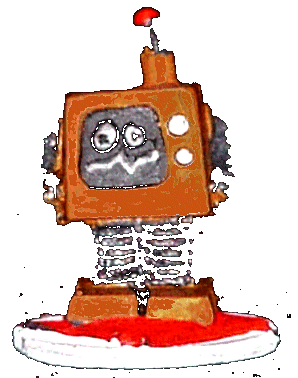
|
|
|||||
 |
||||||
| 2-6 Players | 30+ minutes |
|
Concept: Follow along a lifetime's
events and choices until retirement. |
|
|
Gameplay: Players are all given
colored car and a peg (pink or blue) representing yourself. Everyone
starts at the same place, with the same choice -- go to college (better
career choices but with initial debt), or enter a career path right
away. All players start with the same amount of cash, $10,000. If a player chooses the
career path, they draw a single salary and career card. (If the career
requires a degree, they must draw a different card). If a player
chooses college, they move without a career for a few turns until they
reach a spot labeled Job search. At the job search space, the player
draws 3 salary and 3 career cards and selects one of each. Most turns are simple --
spin the spinner, move your car that number of spaces. Then, follow the
instructions on the space. As players move around the
board, most instructions are pretty basic: lose a turn, pay money,
receive money, draw a life tile, etc. There are a few spaces of
particular importance. First, there are a few red spaces: Job
search, Get married, and Buy a house. Players MUST stop any movement on
these spaces. After they have selected a career, added a spouse,
or drawn a house deed, they spin again and move ahead as usual.
The second major space is the green Pay Day space. Whenever a player
lands on or passes a pay day space, they collect their salary (from the
salary card) from the bank. There are two more space
types, which are quite simple -- blue spaces which are optional for the
player to use, and Career spaces. Career spaces have a small
symbol on them. If a player lands on one of these spaces they
must pay some money to the player who has the matching career card. (If
no player holds the matching career, the bank is paid.) At the beginning of any
player's turn, the player may purchase Automobile insurance,
Homeowner's Insurance or Stocks. Insurance protects you from
certain payout spaces, and stocks allow you to collect money whenever a
specific number is spun. Players move around the
board collecting money and life tiles. At the end of the board
they must make a choice: enter Millionaire Estates or Countryside
Acres. If a player enters Millionaire Estates, they have a chance
to win some extra life tiles: once all of the players retire, the
players in Millionaire Estates count their money... the richest player
wins the reserved 4 life tiles. Players in Countryside Acres get
one life tile for retiring. After all players have
retired and the Millionaire Acres tiles are awarded, all players count
their money and add their Life tiles to the amount. The player with the
largest money amount (cash + life tiles) wins. |
|
| Winning Conditions:
|
|
| Our Opinion:
The game is simple in theme
and in its rules. It has cleaned up in comparison to the versions I
remember when I was a kid. For instance, you used to
"play the stock market" by placing money under
a large cardboard number line -- essentially playing a mini-roulette
game; Whereas, in this version "stocks" are cards
with a single number on them which reduces the clutter of the older
version. There isn't a lot of
strategy -- there are decisions to buy insurance and stocks, but that
is really as strategic as you get. Interestingly, in the game we
played for this review, the winner was the player who had the least
cash when he retired. However, he did move around the board much
slower and collected many more Life tiles than the rest of the
players... thus, his slower pace won the game (but not by much.) As I reminisce about this
game, I remember playing it with other kids, but rarely was the game
completed. Usually we got bored and had races with the cars or used the
little people-pegs in imaginative puppet shows. As a kid, I
remember treating this game as a race. I always tried to speed
through to the end of the path first -- which isn't a good thing if you
try to use the rules to determine the winner: if you go through too
fast, you don't get much money, so you have less chance of winning.
What appeals to the kid in us is the race... the adult tries to play by
the rules of the game, but those make the game quite dull. The game has been around a
long time. I'm sure many people have fond memories of it.
Don't spoil your memories by purchasing it out of nostalgia. It
really isn't that fun to move your car around the board -- it lacks the
trading entertainment of games like Monopoly
even though it's goal is similar: to make the most money. It lacks the
racing competition and player interaction of games like Parcheesi. It's a classic simply because
it was one of the first mass produced games. As a parting thought, in
this "Game of Life" the goal is to retire with the most money -- if you
are a parent, is that what you want your kids to learn from this game?
The philosophical and theological discussions are more interesting than
the game itself. |
|
| Where to buy: Check your local game store
or toy store -- it
costs about US $20. |
|
 |
|
 Other Reviews Other Reviews |
Zombie Main page |
|
|